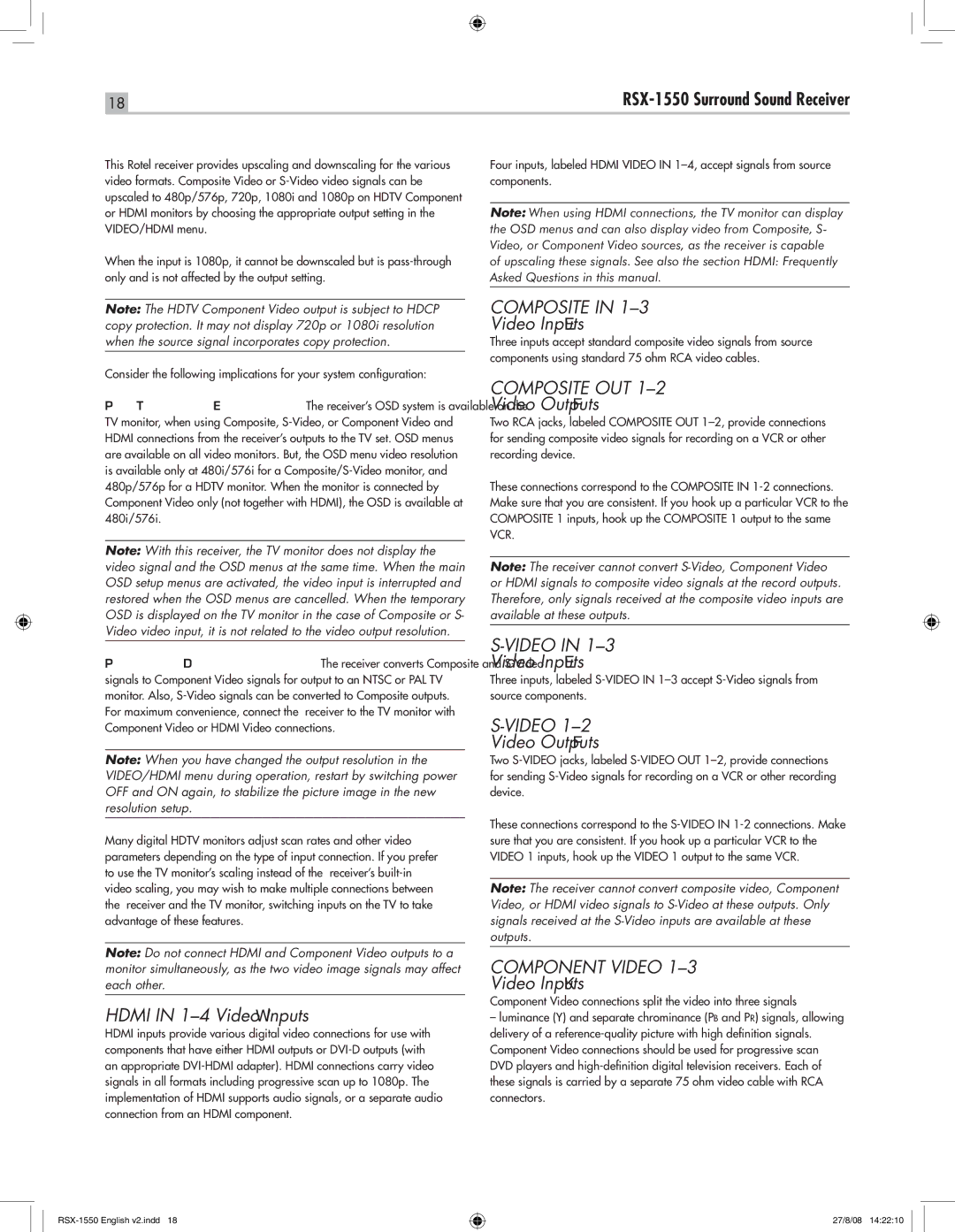
18 |
|
This Rotel receiver provides upscaling and downscaling for the various video formats. Composite Video or
When the input is 1080p, it cannot be downscaled but is
Note: The HDTV Component Video output is subject to HDCP copy protection. It may not display 720p or 1080i resolution when the source signal incorporates copy protection.
Consider the following implications for your system configuration:
On Screen Display: The receiver’s OSD system is available on the TV monitor, when using Composite,
Note: With this receiver, the TV monitor does not display the video signal and the OSD menus at the same time. When the main OSD setup menus are activated, the video input is interrupted and restored when the OSD menus are cancelled. When the temporary OSD is displayed on the TV monitor in the case of Composite or S- Video video input, it is not related to the video output resolution.
Output Conversion: The receiver converts Composite and
Note: When you have changed the output resolution in the VIDEO/HDMI menu during operation, restart by switching power OFF and ON again, to stabilize the picture image in the new resolution setup.
Many digital HDTV monitors adjust scan rates and other video parameters depending on the type of input connection. If you prefer to use the TV monitor’s scaling instead of the receiver’s
Note: Do not connect HDMI and Component Video outputs to a monitor simultaneously, as the two video image signals may affect each other.
HDMI IN 1–4 Video Inputs x
HDMI inputs provide various digital video connections for use with components that have either HDMI outputs or
Four inputs, labeled HDMI VIDEO IN
Note: When using HDMI connections, the TV monitor can display the OSD menus and can also display video from Composite, S- Video, or Component Video sources, as the receiver is capable of upscaling these signals. See also the section HDMI: Frequently Asked Questions in this manual.
COMPOSITE IN 1–3
Video Inputs f
Three inputs accept standard composite video signals from source components using standard 75 ohm RCA video cables.
COMPOSITE OUT 1–2
Video Outputs g
Two RCA jacks, labeled COMPOSITE OUT
These connections correspond to the COMPOSITE IN
Note: The receiver cannot convert
S-VIDEO IN 1–3
Video Inputs f
Three inputs, labeled
Video Outputs g
Two
These connections correspond to the
Note: The receiver cannot convert composite video, Component Video, or HDMI video signals to
COMPONENT VIDEO 1–3
Video Inputs l
Component Video connections split the video into three signals
–luminance (Y) and separate chrominance (PB and PR) signals, allowing delivery of a
27/8/08 14:22:10
